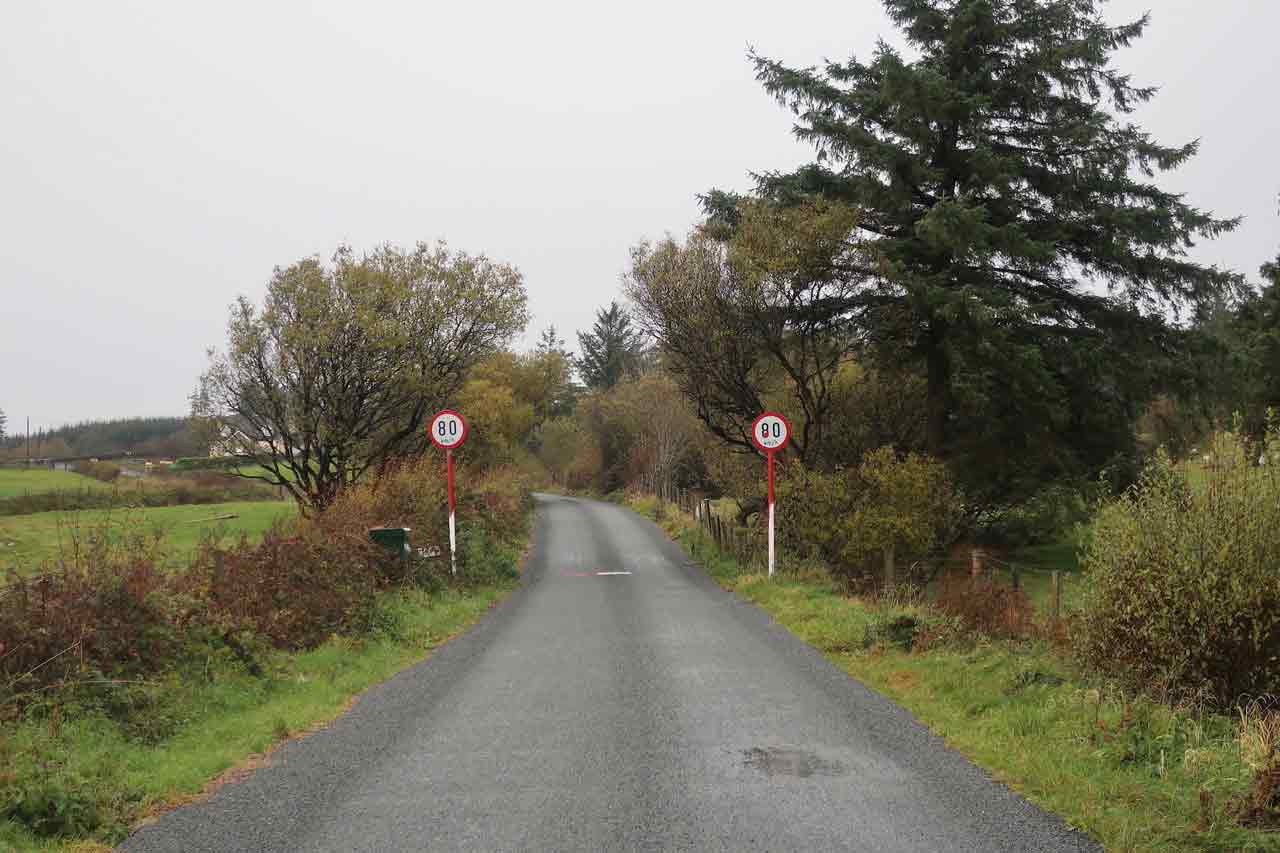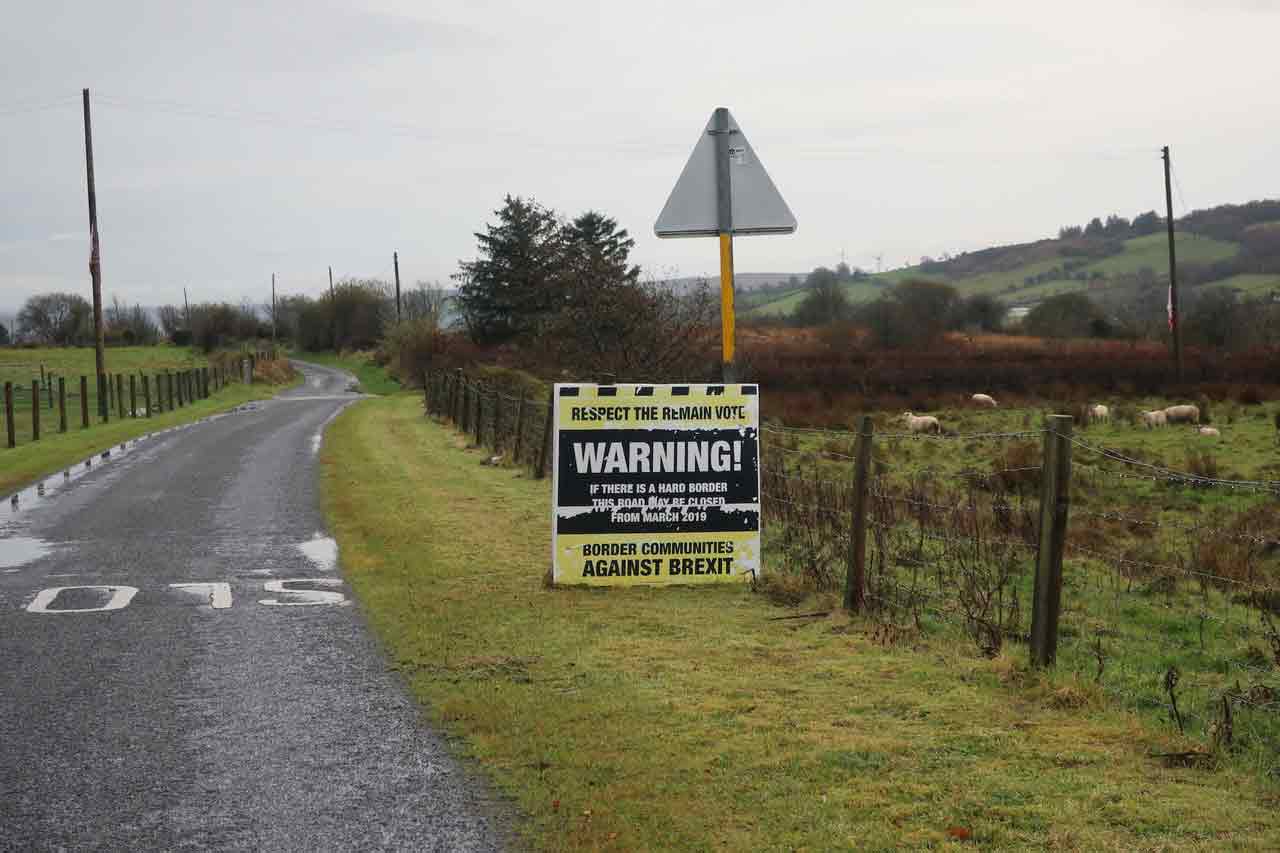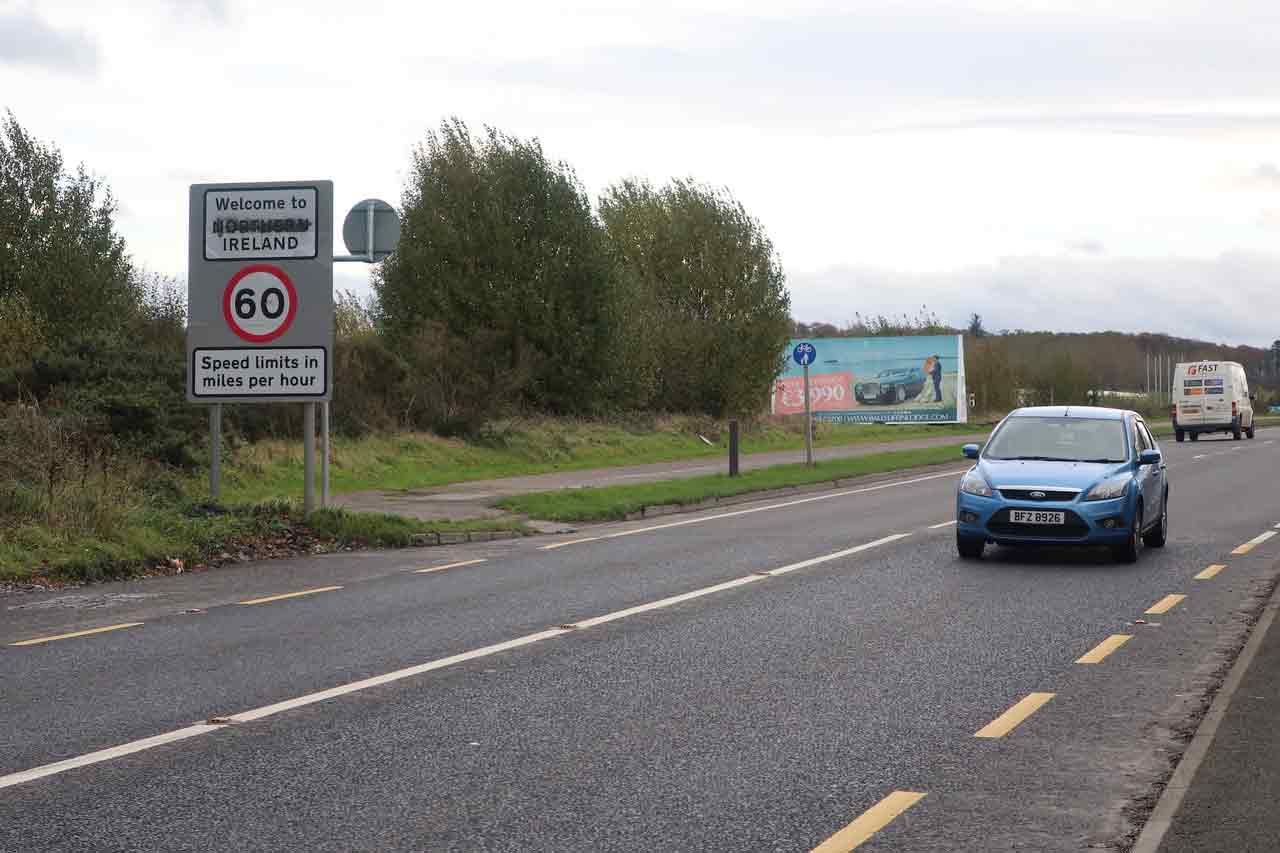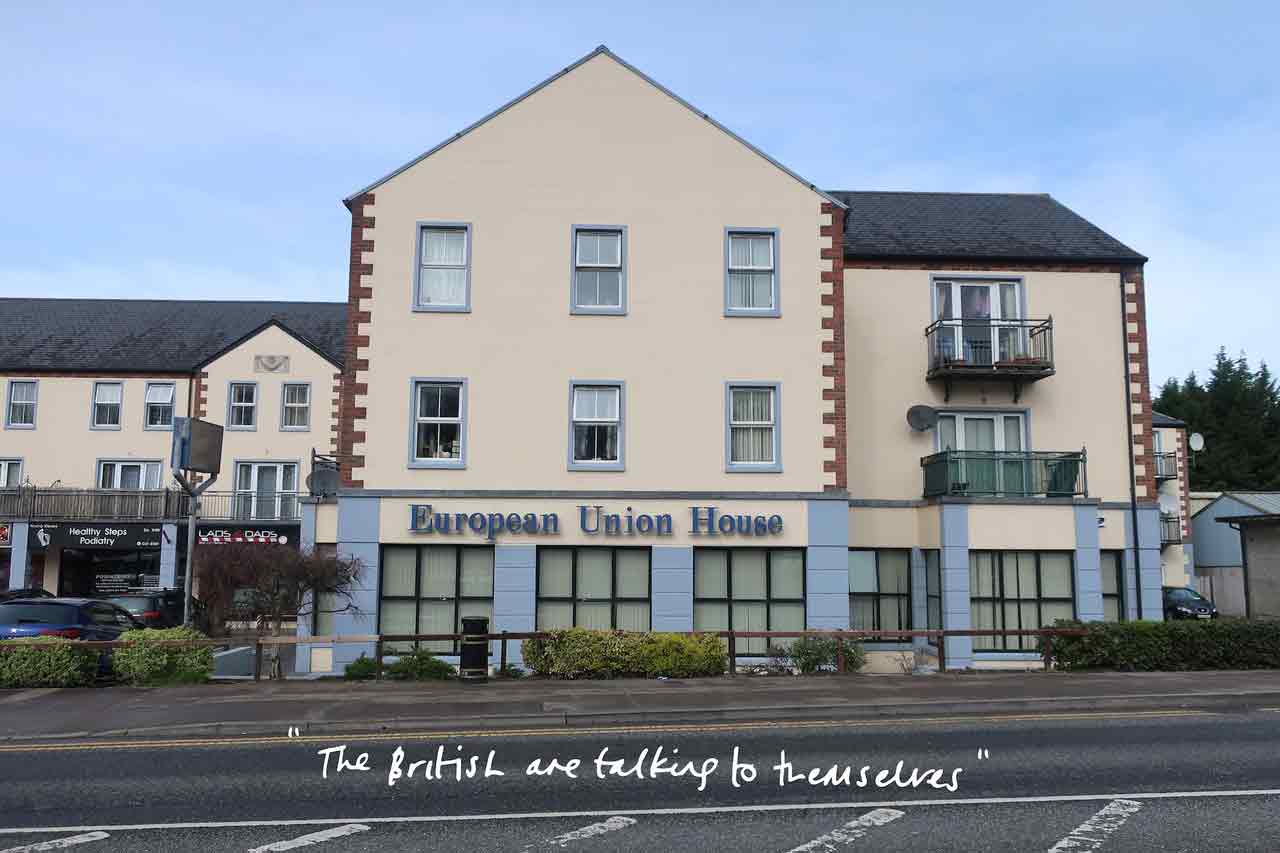- Login
Critical Spatial Practice






‘So what are you doing here?’
‘I’m walking the border’
‘Oh you mean the British border?’
‘…’
‘Well the Irish didn’t put it there did they?’
The border in Ireland runs 310 miles from Lough Foyle to the Irish Sea and has divided the six counties of Northern Ireland from the Republic since 1921. Its sinuous route stems from 17th-century county boundaries, the irregularities of which are heightened due to the unique relationship between architecture, history, geography, and politics in these islands.
With the so-called ‘Irish Question’ remaining relevant to UK politics for more than 200 years, and now once more due to Brexit, this research uses lessons of the border to produce a public architectural history that looks forward and looks back. It questions how sites of the border tell the history of its past, present, and future condition.
The research understands the contested spatiality of the Irish borderlands through a series of walks along and across the border, both alone and with others. These routes are determined by key historical moments, showing how the border has been seen or inflected differently over time. Through the walks these histories are connected spatially, deriving from, and relating to, key sites along the border where they take place.
This approach is underpinned by the restaging of a ‘hedge school’: an 18th and 19th-century Irish pedagogical precedent used to develop a method that practices history with others. The timing of this is critical; conducted as the centenary of Partition in Ireland approaches in 2021 and as the UK exits the EU.
This work tests a way of producing a public architectural and landscape history that takes research beyond the archive and the academy; responding to the specific geographies and histories of the border, as well as the daily practices around it. It asks how histories – both official and unofficial – have influenced the border, and in turn how they may have been shaped by the border in the first place.
Tom Keeley is an architectural historian working between architecture, geography, landscape and culture through site-specific writing, practice-based research, and publishing. He is currently undertaking a PhD in Architectural History and Theory at the Bartlett School of Architecture, UCL, supervised by Jane Rendell and Barbara Penner, and funded by the London Arts & Humanities Partnership. Prior to this he studied landscape architecture at the University of Sheffield, and an MA in Architectural History at the Bartlett. He teaches at the Welsh School of Architecture, Cardiff University, and Central Saint Martins.
Previous projects include fanzine Go Sheffield! and experimental university Learning from Kilburn. He has worked for organisations including The Architecture Foundation (London, UK), Storefront for Art and Architecture (New York, USA), and Space Caviar (Genoa, Italy). His work has been exhibited internationally, including at the Salone del Mobile Milan and the Venice Architecture Biennale; and is held in the collections of the National Art Library at the V&A in London, and the School of Architecture Library at Princeton University.
My work has tended to begin with a text/texts, found or otherwise, and works with them in relation to a certain site/sites. The site-specific nature of each piece of work evolves from a process of re-reading and movement in relation to the texts, histories, spaces, practices and politics of each site; layering and shifting them in relation to one another to understand them from a different point of view. This close looking at everyday – or even ‘banal’ – architectures and landscapes, in conjunction with an experimental means of dissemination, invites a broad public to engage with the work with the eye of a critical tourist.
Reyner Banham, Los Angeles: The Architecture of Four Ecologies (1971)
G. Boumphrey, , The Shell Guide to Britain (1964)
The Center for Land Use Interpretation, Culver City, USA www.clui.org
3 editions of Keeley Travel.



































































